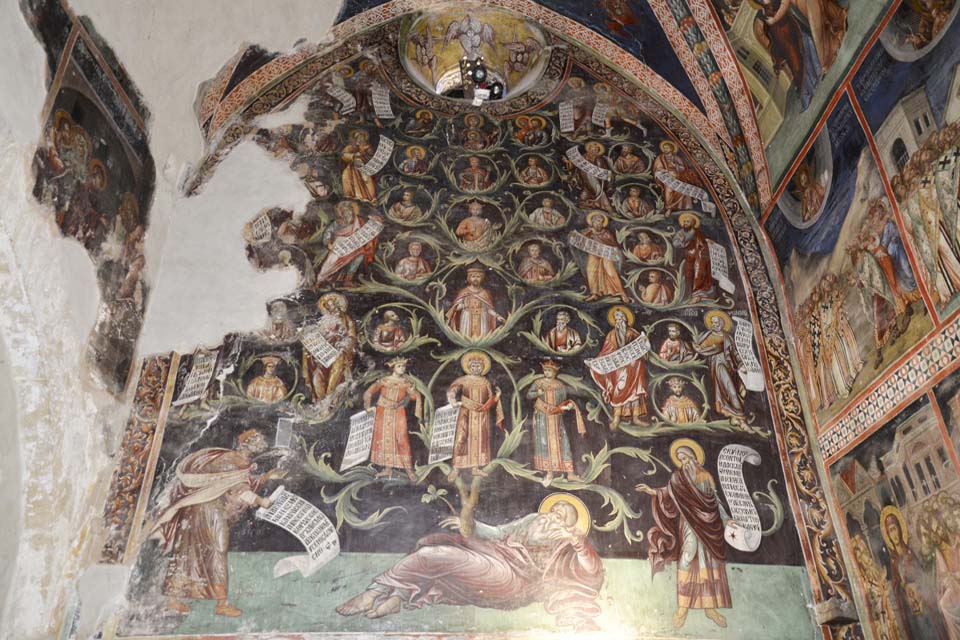The Monastery of Agios Ioannis (St. John) Lambadistis Frescoes
As seen in the decor and frescoes, the monastery flourished during the Byzantine period, as well as during the French Occupation (1191-1489) and the Venetian domination (1489-1571). The frescoes were created in different times, from the 11th to the 16th century and are of different styles. Many icons kept in the monastery are also important to mention, such as Agios Ioannis the Lampadistis of the 14th century, Agios Iraklidios of the 16th century and several others. It is also worth mentioning that the iconostasis of the catholic monastery is the oldest preserved wooden iconostasis in Cyprus. Built in the 13th century, it has beautiful decorations with coats of arms and other designs. During the Ottoman domination (1571-1878), the monastery experienced significant growth, especially in the very difficult conditions of the time. In the 18th century it was reported that 14 monks lived there, it had 4 living areas. It then collapsed and at the beginning of the last century, was abandoned.
Location
Frescoes - Icons
Murals of the Church of Panagia Podithou
At the dawn of the 16th century, in 1502, the frescoes of the Panagia of Podithou Church in Galata, with Italian-Byzantine-style frescoes, are considered as a stage in the evolution of art in Cyprus. Its main features are bright colours and third-dimen
The Agios Nikolaos tis Stegis (St. Nicholas of the Shelter) Murals
The 12th century is considered as the golden age for Byzantine art in Cyprus, but also unique in the whole world, because the surviving ones from this period are limited. The frescoes that survive in Agios Nikolaos tis Stegis and especially those revea
The Church of Panagia Asinou Frescoes
The church of Panagias Forviotissas, better known as Panagia Asinou, is built southwest of Nikitari village. The interior of the church of Panagia Asinou is documented. The frescoes that survive today belong to different chronological periods. The olde
The Panagia Odigitria (Virgin Mary The Guide) Icon
One of the most remarkable icons is that of Panagia Odigitria dating back to 1474. It belongs to the local iconographer Minas, who also painted the famous church of Archangel Michael. The icon is kept and displayed in the Byzantine Museum of Pedoulas.













